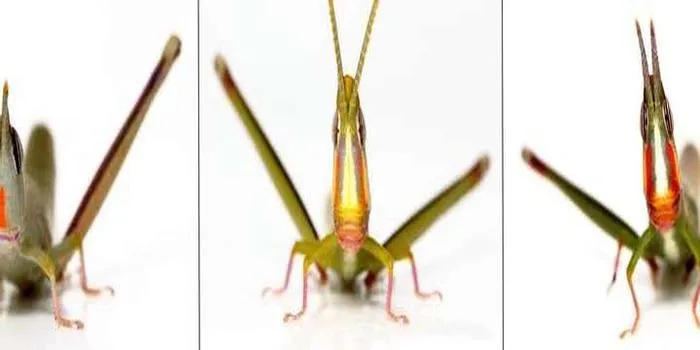- Home >
- Science
- > Exploration
This Australian grasshopper gave up sex 250,000 years ago and it’s doing fine
The Australian grasshopper Warramaba virgo has survived without sexual reproduction for about 250,000 years. This species reproduces through parthenogenesis, where females produce offspring without mating. Despite the potential genetic downsides of asexual reproduction, such as reduced genetic diversity, Warramaba virgo has thrived in its environment. This challenges the common belief that sexual reproduction is necessary for long-term species survival, highlighting the adaptability and resilience of certain organisms in maintaining their populations.

The story of the Australian grasshopper that gave up sex 250,000 years ago is both fascinating and illuminating. This unique species, known scientifically as 'Kakophonia', has adapted to its environment without the need for sexual reproduction. Instead, it reproduces through a process known as parthenogenesis, where females produce offspring without fertilization by males. This adaptation has led to intriguing insights into evolution, survival, and the mechanics of reproduction.
Understanding Parthenogenesis
Parthenogenesis is a form of asexual reproduction that has been observed in various species, including plants, reptiles, and insects. In the case of the Kakophonia grasshopper, this method has proven to be remarkably effective. By eliminating the reliance on males, these grasshoppers have streamlined their reproductive processes, allowing them to thrive in environments where males are scarce or absent.
Evolutionary Advantages of Asexual Reproduction
The choice to forgo sexual reproduction can offer several evolutionary advantages:
| Advantage | Description |
|---|---|
| Increased Population Growth | Females can produce offspring without the need for males, leading to faster population growth. |
| Energy Efficiency | Asexual reproduction requires less energy than finding a mate and engaging in courtship behaviors. |
| Colonization of New Habitats | With a single fertilized female, a new area can be populated rapidly, which is beneficial in changing environments. |
| Genetic Stability | Parthenogenesis can lead to a stable genetic makeup, which is beneficial in stable environments. |
The Kakophonia Grasshopper's Unique Adaptation
The Kakophonia grasshopper has developed a unique set of adaptations that have allowed it to thrive in the Australian landscape. These adaptations include:
- Coloration: The grasshopper exhibits bright colors that serve as both a warning to predators and a method of camouflage.
- Diet: It has evolved to consume a variety of plants, allowing it to thrive in diverse habitats.
- Habitat Selection: Kakophonia grasshoppers prefer environments where competition for resources is low, ensuring their survival.
Implications for Evolutionary Biology
The study of the Kakophonia grasshopper provides valuable insights into evolutionary biology. It challenges traditional notions of reproduction and highlights the potential for species to adapt in unexpected ways. Researchers are particularly interested in how the loss of sexual reproduction influences genetic diversity and resilience in changing environments.
Genetic Diversity and Survival
While asexual reproduction allows for rapid population growth, it raises questions about genetic diversity. Genetic diversity is crucial for a population's ability to adapt to environmental changes and resist diseases. The Kakophonia grasshopper, despite its asexual nature, exhibits mechanisms that maintain a degree of genetic variability:
- Mutation Rates: Higher mutation rates can introduce new genetic variations, even in asexually reproducing populations.
- Environmental Adaptation: The grasshoppers can adapt to their surroundings through selective pressures, even without sexual reproduction.
Future Research Directions
The unique case of the Kakophonia grasshopper opens up several avenues for future research. Scientists are keen to explore:
- Genetic Studies: Investigating the genetic makeup of Kakophonia can reveal how it maintains diversity.
- Ecological Impact: Understanding the ecological role of this grasshopper may help in conservation efforts and ecosystem management.
- Comparative Studies: Comparing Kakophonia to other asexual species can provide insights into evolutionary pressures and reproductive strategies.
Conclusion
The Australian grasshopper that gave up sex 250,000 years ago exemplifies nature's ability to adapt and thrive under varying conditions. Its shift to asexual reproduction through parthenogenesis raises essential questions about genetics, evolution, and survival. As we continue to study this remarkable insect, we gain a deeper appreciation for the complexities of life and the myriad strategies that species employ to ensure their survival.
Understanding the implications of the Kakophonia grasshopper's journey can shed light on broader evolutionary trends and the future of biodiversity in our changing world. This intriguing case not only enriches our knowledge of evolutionary biology but also serves as a reminder of the resilience and adaptability of life on Earth.












